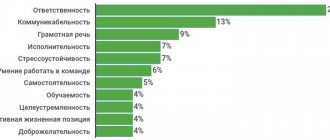Typology and styles of conflict behavior
The vast majority of people do not seek conflicts and try to either avoid them or resolve them peacefully. However, for effective influence and behavior in conflict situations, it is useful to know the principles and rules applicable to resolving a wide range of conflicts. Summarizing various sources, we can identify the main styles of conflict behavior.
There is a direct connection between the basic strategies for dealing with conflicts and styles of conflict behavior, in which stable, typical behavioral traits of conflict participants are manifested. There are quite a variety of classifications of such styles. Summarizing various sources, we can identify the main styles of conflict behavior.
1. Power style (style of fighting or competition). The essence of this style is the desire to impose one’s will and resolve the conflict using force (power, administrative sanctions, economic pressure, etc.), regardless of the interests of the opponent. This style is usually used when:
- there is a clear advantage in strength, resources of influence and confidence in victory;
- achieving the goal is of high importance;
- compromises are difficult due to the specifics of the object: it cannot be divided (for example, the position of the president of a company).
Despite the apparent effectiveness of using the power style, it has significant drawbacks. After all, the forceful style, as a rule, does not eliminate the source of conflict, but only forces the weaker to temporarily submit. After some time, especially if the balance of forces changes, the conflict may resume. In addition, subordination imposed by force is often external, formal. The defeated can offer hidden resistance, accumulate strength and wait for an opportune moment. The winner often relaxes, loses his readiness to fight, and loses his resources of influence.
The forceful style is often used by managers in relation to subordinates, since by their status they have power and superiority in influence resources. In such cases, the weaknesses of the power style noted above usually appear, and in addition, it can cause frustration in subordinates and discourage them from any desire to show initiative and activity.
2. Avoidance of conflict, avoidance of conflict situations or exit from conflict. Avoidance of conflict is considered preferable if:
- there is a lack of one’s own resources necessary for conflict actions, and the superiority of the enemy;
- the significance of the problem is low and it is not worth wasting time and resources on confrontation;
- It is advisable to delay time in order to gather strength and wait for a convenient situation, the right moment.
Often all three of these circumstances occur simultaneously. However, even if they are present, it is not always possible to avoid the conflict; very often you have to choose a style of behavior associated with unilateral concessions.
3. Adaptation (to the interests and requirements of the opponent). This style of conflict behavior involves the need to sacrifice one’s interests in favor of the opponent, fulfill his demands and abandon one’s own goals. Consistent use of this style leads to victory for one side. The adaptation style often has to be used by subordinates in conflicts with superiors, as well as by lower-level managers in relation to senior managers.
Accommodation is usually a forced style of conflict behavior. If it is accompanied by an awareness of one’s own wrongness in the dispute, then it does not have negative organizational consequences. If the adaptation is viewed as forced and internal disagreement with the winner remains, then it has approximately the same negative consequences for the losing side as with a forceful style. The only difference is in preserving the resources that are spent on fighting in a forceful style.
4. Compromise. The essence of this style of conflict behavior is partial (to a certain extent) concessions to the opponent in anticipation of similar actions on his part in the hope of avoiding an aggravation of the conflict, which is fraught with greater losses than individual concessions. Compromise is one of the most common styles of conflict behavior. Often, a compromise allows you to quickly and relatively easily resolve a conflict or prevent it.
Compromise as a way to resolve conflicts has the following disadvantages:
- it can, especially at an early stage, block the identification of the source of the conflict, prevent a deep analysis of the essence of the problem and the search for optimal ways to resolve it;
- it preserves relations of confrontation and mutual dissatisfaction, since it means forced concessions that are unpleasant for each side. Because of this, opponents may maintain a negative attitude towards each other, as well as a feeling that they have lost or been deceived. If vital goals or values are sacrificed in the compromise, discontent may grow and eventually lead to renewed and intensified conflict.
5. Collaboration. This style of conflict behavior involves a joint solution to the problem that is acceptable to all parties to the conflict. Cooperation means carefully familiarizing yourself with the position of the opposite side, finding out the causes of the conflict, refusing to achieve one’s own goals at the expense of the opponent’s interests, searching for mutually acceptable ways and solutions and their joint implementation. Cooperation is most correlated with an idealistic strategy for dealing with conflict. It is quite widespread in management practice.
More on the blog: How emotional intelligence helps you find your purpose
6. Maintaining the status quo (peaceful coexistence). The essence of this style is to jointly maintain and preserve their positions in order to prevent the conflict from growing, which would be unfavorable for both sides. The resolution of the dispute is postponed indefinitely. This style is used if the conflict is deep enough, but allows for relatively normal coexistence of the parties. At the same time, each of the participants is not confident in their victory and fears a destructive confrontation, or even defeat.
In an organization, the style of peaceful coexistence is usually implemented in the form of an informal agreement, on the basis of which spheres of action are divided or the inadmissibility of extreme forms of rivalry is stipulated, and often joint actions are provided for in relation to a third party that encroaches on the existing order.
7. Formation of indifference. This style occupies an intermediate position between cooperation and peaceful coexistence. Its essence is to jointly neutralize the emotional intensity that has arisen around a controversial issue, and to work to explain the limited significance of this issue for the parties to the conflict. After such actions that reduce the severity of the conflict, many problems gradually disappear on their own.
Conflict: choosing a behavior style
According to a number of empirical studies, in practice, the search for compromises, as well as avoidance of direct confrontations, predominate. In general, the choice of behavior style in conflicts is influenced primarily by the following four factors:
- the amount of bet that can be won or lost as a result of the conflict. If there is an opportunity to get a big win or with minimal damage in case of failure, they often choose a forceful style, wrestling;
- resources that determine the possibility of competition and the likelihood of victory;
- the presence of mutual, overlapping interests among the parties to the conflict. If there is a common interest in cooperation in non-conflict areas, the choice falls, as a rule, on “soft” styles of conflict behavior;
- culture, traditions: a complex of relations between both the participants in the conflict and their environment.
Taking into account the effect of these factors, the focus on achieving one’s own goals by force and ignoring the interests of the opponent is formed something like this. First, the size of the bet and possible damage in case of defeat are determined. Then the line of behavior is adjusted taking into account one’s own resources and the strength of opponents (the probability of victory is predicted). Next, the entire range of interests in relation to the opponent is clarified.
The presence of coinciding interests encourages cooperation; their polar orientation increases the desire for competition. The nature of the existing relationships and the norms of behavior accepted in a given social environment either lead to cooperation or push to fight.
Conflict: typology of participants
The vast majority of people do not strive for conflicts and try to either avoid them or resolve them peacefully, generally preferring non-conflict behavior. The causative agents and initiators of conflicts are heterogeneous in their personal qualities. Typically, an employee with a clearly conflicting aspiration is distinguished by the fact that:
- does not think about others, does not understand their needs and interests, cares only about satisfying his own needs;
- acts ahead;
- often falsifies facts;
- looks for a weak point in the opponent’s position;
- believes that retreat leads to loss of face;
- uses gag tactics;
- considers himself an expert;
- disguises his intentions (voice, manners);
- believes that winning arguments is very important;
- refuses a discussion if it does not go in his favor.
The targets of attacks from competitive people are often those who prefer to give in and avoid conflict situations. These personality types:
- as a rule, they lose the conflict;
- express their point of view in an apologetic tone;
- believe that they will lose if they disagree with their opponent;
- worry when others do not understand their arguments;
- avoid talking about their disagreement in person;
- perceive differences of opinion very emotionally;
- believe that in conflict situations one should not stick one’s neck out;
- often find themselves faced with the temptation to give in to their opponent;
- believe that it is difficult for other people to survive conflict;
- never act thoughtlessly or rashly.
Conflict: classification of initiators
An extensive, rather figurative classification of various active and passive initiators of conflicts is given by English conflictologist Richard Bramson. He divides this kind of people into the following five types: aggressive, “complainers,” “indecisive,” “anxious individuals,” and “know-it-alls.”
1. Aggressive. They, in turn, are divided into three types: “tanks”, “snipers” and “explosives”:
“ Tanks ” are the most clearly expressed type of aggressive personalities. They are characterized by self-confidence, a loud voice, and inattention to others. They are absolutely confident in their competence and in their excellent knowledge of the interests and opinions of their colleagues. “Tanks” especially do not like aggressive reactions from those with whom they communicate. It’s difficult with “tanks,” but you can get along. To do this, you need to look them straight in the eyes, call them by name and surname, and when expressing disagreement, often use expressions such as “in my opinion,” “in my opinion,” etc. In order to achieve any success in an argument with them, you need to give them the opportunity to “let off steam.”
More on the blog: Neil Donald Walsh: It all starts with you!
“ Snipers ” act differently, mostly on the sly. They are sarcastic, make all sorts of barbs and witticisms at people, and thereby sow distrust between group members and disorganize collective actions. The most effective weapon against "snipers" is a direct attack. In order to neutralize the “sniper,” you must demand that he explain in detail the remark or witticism, and then be sure to ask him to give a constructive proposal. Usually after this the “sniper” becomes quiet and behaves more modestly. When putting “snipers” in their place, it is important to avoid direct insults and give them the opportunity to save face. Otherwise, they explode or hide “with a stone in their bosom” until the opportunity arises.
“ Blasters ” are people who are capable of suddenly filling a room with screams and attacking opponents with abuse. They often lose their temper so artistically that they create the impression that they have really been seriously offended or that someone is undermining them. It is quite simple to neutralize the conflict potential of such people: they need to be allowed to throw out accumulated emotions. In this case, after some time (five to ten minutes) they sharply soften, or even begin to apologize.
2. “Complainers” are typical provocateurs of conflicts. They tend to see personal insults in anything and complain about this to all authorities. They usually describe their “troubles” so colorfully that listeners who don’t know them often form an opinion in their favor. “Complainers” want to be given a lot of attention, to be listened to in a calm environment and certainly while sitting down. You cannot agree with them or prove them wrong. It is better to ask them to summarize everything in their own words or in writing and let them know that their feelings are noticed.
3. “Indecisive” people themselves do not directly give rise to conflict, but create favorable soil for it and provoke others to conflict actions. There are two types of “indecisive”: “analysts” are reinsurers who are afraid to make the slightest mistake, and “good-natured” people are people who never speak out for fear of making enemies. With their indecisiveness, they irritate those around them, so their work rhythm is often disrupted because of them.
Being too cautious, such workers are diligent. As a rule, they avoid those who put pressure on them. Workers of this type need to clearly set the task, determine the deadline for its completion, and also, especially the “goodies,” indicate their responsibilities to suppress or prevent various types of unrest and organizational violations.
4. “Anxious individuals” (“irresponsible”) - people who are suspicious and suspicious. They have reactive, responsive, in their opinion, aggressiveness. Anxiety does not give rise to avoidance of conflict, but to aggression. The best effect on such people is a friendly disposition towards them. You don't need to waste time talking to them. If they feel warmly treated, then their behavior gradually normalizes.
5. “Know-it-alls” (“erudites”) - employees who try to create the impression among others that they know everything, and at the same time constantly mind their own business. They are divided into genuine and “fake” scholars. The judgments of the former in most cases are professionally substantiated, while the latter only try to prove their professionalism in words.
It’s easy to put “fake” scholars in their place, showing their unreasonable pretentiousness and professional incompetence. Genuine scholars are valuable workers, but with their defiant behavior they often create irritation and a feeling of inferiority in those around them. If they get too carried away, then they can be stopped, “sobered up” with specific questions, asking them to make their own constructive suggestions. It should be borne in mind that “erudites” rarely admit their mistakes.
Dealing with each of the considered types of conflict initiators requires the manager to be able to accurately determine the type of employee and use appropriate influence tactics.
Author: Vasily Pavlovich Pugachev, Doctor of Philosophy, Professor, Head of the Department of Personnel Management, Faculty of Public Administration, Moscow State University. Lomonosov.
Source
Read our classified materials
Types of conflicts in an organization
People working in different organizations, companies, institutions are not the same among themselves, as a result of which they perceive the circumstances of professional functioning differently. Differences in perception provoke disagreements in attitudes and divergences in positions.
Concept and types of conflicts
In enterprises, conflicts are caused by the contradiction between the conscious behavior of one opposing party and the interests of the other participant.
It is generally accepted that managers, on average, spend approximately 20% of their own work time managing and resolving confrontations. To effectively manage collisions that occur during the interaction of subjects, you should know what conflicts exist, types of conflicts, examples of them, ways of occurrence and resolution.
Depending on the factors that provoke the emergence of a situation of confrontation, sociologists distinguish the following types: clash of goals, divergence of views, conflict of feelings.
When there is a conflict of goals, process participants have different ideas about the expected state of the organization in the future. Divergence of views, contradictory ideas, dissimilar means used to solve problems represent the second type. Resolving conflicts of this type requires more time than resolving a problem caused by dissimilarity of goals. The third type arises in situations where the parties are characterized by the dissimilarity of feelings and emotions that form the basis of their relationships with each other.
Conflictologists and managers of our time agree that any confrontation within an organization will not necessarily have a destructive function (destructive confrontation). Often in organizations, conflict has a positive effect. Such conflicts are called constructive. Even when they have a negative impact on the team and interfere with meeting needs and generally achieving the company’s goals, conflicts still have a positive aspect, for example, helping to reveal a diversity of points of view and develop a more optimal production strategy.
Avoidance
The essence of this strategy is that a person tries to do everything possible to postpone conflict and important decisions until later. With this strategy, a person not only does not defend his own interests, but also does not pay attention to the interests of his opponent.
Basic human actions with the “Avoidance” strategy
- Refusal to interact with an opponent
- Demonstrative withdrawal tactics
- Refusal to use force
- Ignoring any information from the opponent, refusing to collect facts
- Denial of the importance and seriousness of the conflict
- Deliberate slowness in decision making
- Fear of making a retaliatory move
Pros and cons of the Avoidance strategy
The “Avoidance” strategy can be useful in a situation where the essence of the conflict is not particularly important or when there are no plans to maintain relations with the opponent. But here again: if a relationship with a person is important to you, then avoiding responsibility and shifting problems onto someone else’s shoulders will not resolve the situation, otherwise it threatens not only to worsen the situation, but also to deteriorate the relationship and even its final break.
4











